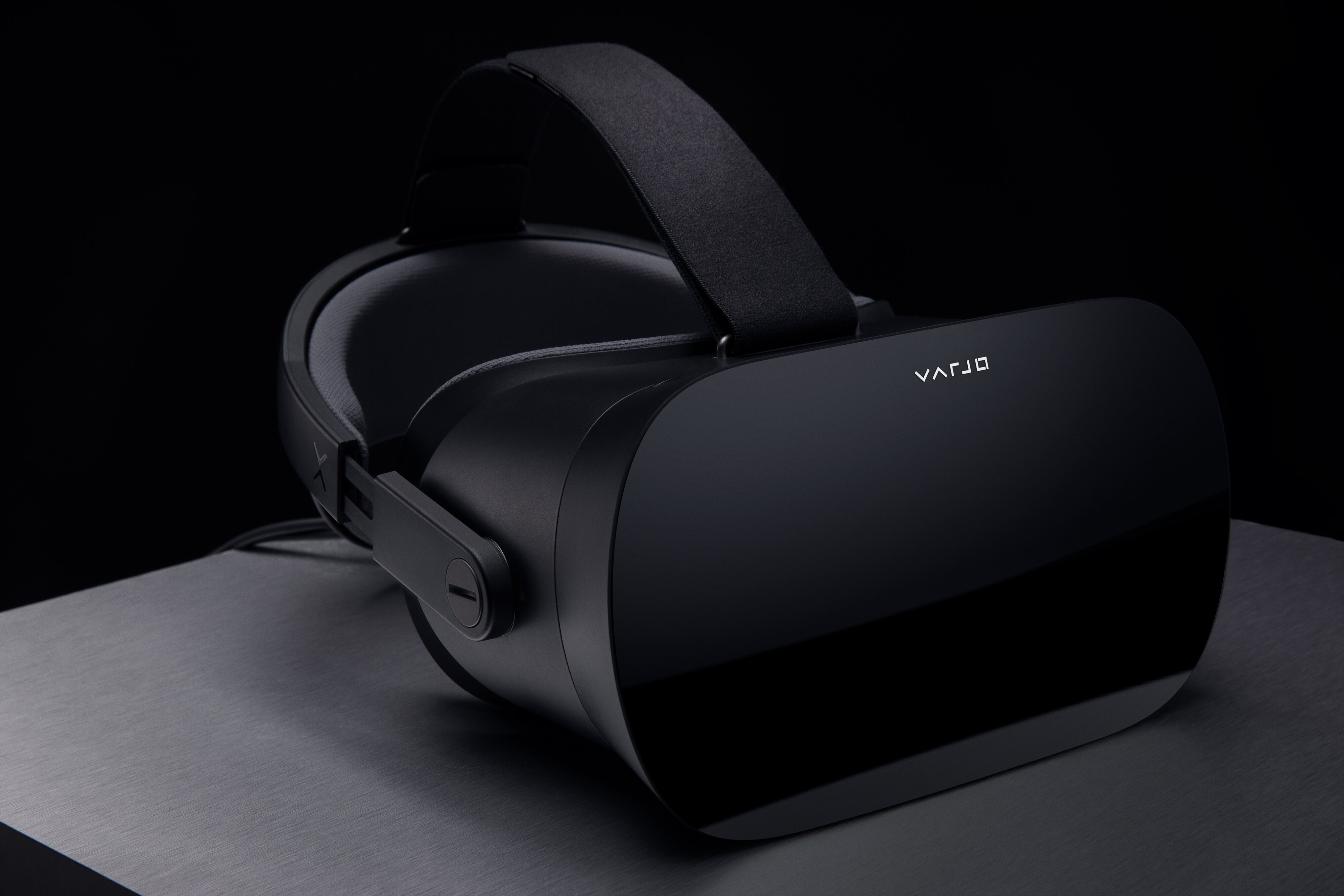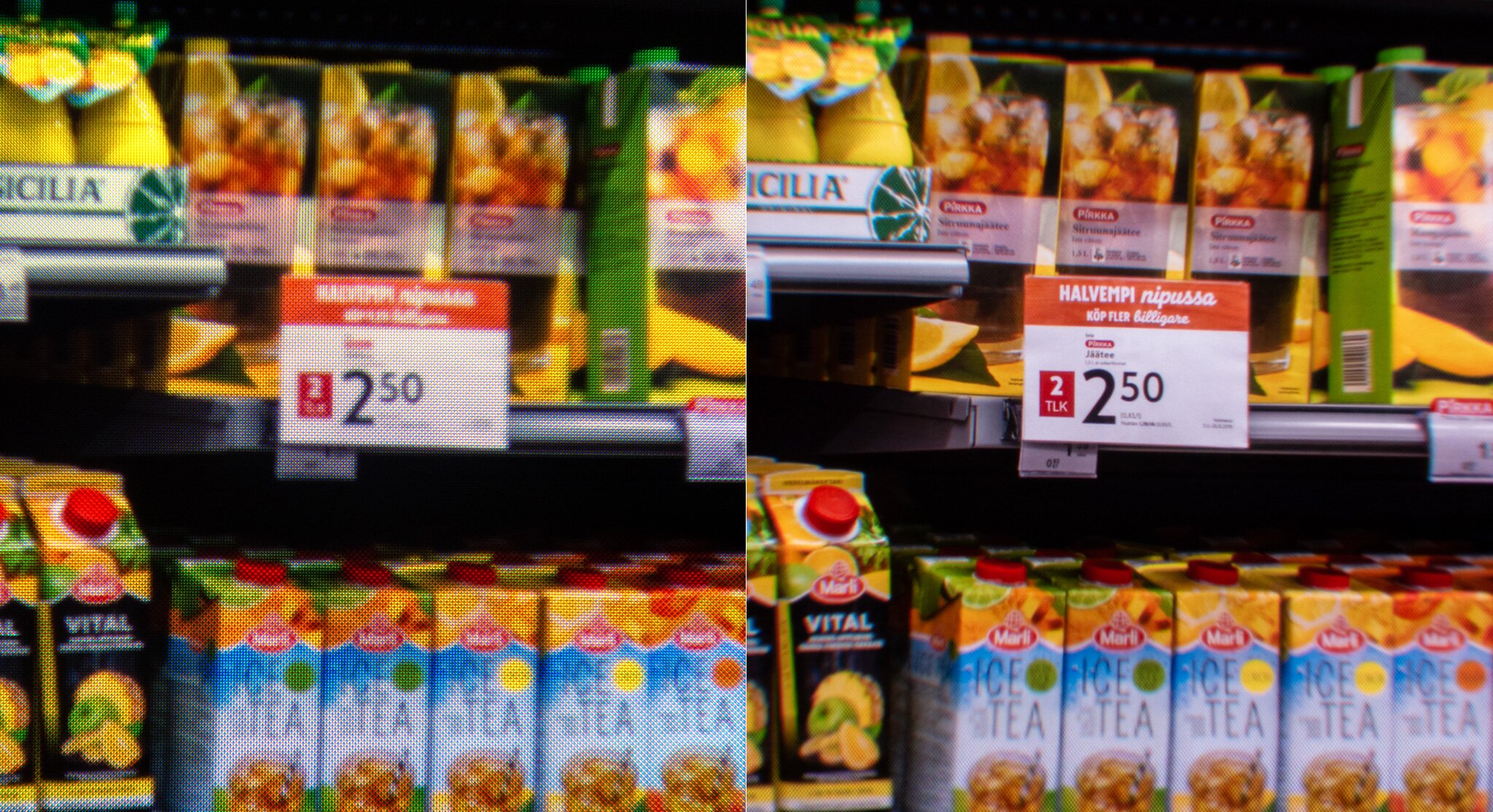I’m a great believer that understanding display technology is only half the story. If you don’t understand the human side of the interface, you don’t really understand the display. So, when I see companies that have used an understanding of the human visual system and are exploiting it in their display, I pay particular attention. That’s why I have been keeping my eye on Varjo of Finland.
Varjo has just announced new versions of its VR headset, so I took the opportunity to go to the AWE Europe Expo in Munich to have a look at the headset. I hadn’t been to the AWE Europe event before, although I have attended a couple of the US versions, when it has taken place in Santa Clara in the week between SID Display Week and Infocomm. The European event is smaller and has fewer exhibitors, but there were a number of interesting topics. I’ll summarise the rest for a Display Daily next week, but for now, I’ll concentrate on Varjo.
The Finnish start-up has been working on a headset for several years based on the idea of combining a very high resolution display to cover the part of the eye that can see the resolution (the fovea) with a standard and lower resolution display that gives a wide field of view and a sense of immersion. Up to now, having a display that is high resolution all over is too difficult to make and drive, especially with a lower powered processor, while most VR headsets have very low levels of pixel density and give a low resolution image.
 The new headset – click for higher resolution
The new headset – click for higher resolution
I saw Varjo’s first headset at MWC and AWE Expo in 2018 and the centre resolution was very impressive and different from the run of the mill headsets that I had been looking at. However, there was a very clear transition between the centre area (driven by an OLED with 1440 x 1600 resolution) and the surrounding LCD. That was obvious at both demonstrations, but by AWE Expo, the overall experience including tracking, was much better.
 The left hand image is a Vive Pro – the right is the new Varjo. Image:Varjo
The left hand image is a Vive Pro – the right is the new Varjo. Image:Varjo
At AWE Europe, I met with founder and original CEO, Urho Kontorri, who is now Chief Product Officer, as he really wanted to focus on the product and technical aspects of the company, which has been growing very fast. I got a demo of the new headset which was announced just before the show. There are two versions, the VR-2 and the VR-2 Pro. The Pro version has integrated hand tracking based on Ultraleap technology (integrating Leap Motion), but is otherwise the same from the display point of view.
I got a demonstration of an application that exploited the high resolution and the new eye-tracking technology (although it didn’t seem to like my eyes – but that’s what you get at trade show!). In the application, the viewer could move around a virtual Finnish supermarket and the system could be used for store planning as the software can track where the viewer’s eyes look and help store designers to optimise they way they lay out the stores. Unlike other VR headsets, the high resolution allows detailed reading of the packaging and that was impressive.
Also very impressive was the improvement in the matching between the two displays. Since last year, the company has significantly improved the optics of the detail display and the overall display (which it calls the ‘context display’) and has developed better coatings for the lenses, which are very different. It has also optimised the processing to deal with the distortion from the lenses.
The centre display has very small pixels, with no ‘screen door effect’, but the context display had a significant ‘screen door effect’. Varjo has used a special microprism film to ‘spread’ each of the subpixels a little which hides the effect and also has the benefit of improving the homogeneity of the white. The firm has also added pixel level calibration for the LCD – it was already available on the OLED.
The OLED has a wider gamut than the context display, so Varjo has limited the actual display to be close to sRGB which the LCD can match.
The result of all these changes is that it is quite tricky to ‘see the join’ between the two displays if there is plenty of detail, although you can still see it on some flat image areas. In the demonstration application, the join was not visible, unless, like me, you really tried to find it! So, congratulations to the firm on its very rapid progress from the beginning of last year.
I had been impressed with the tracking demonstrated at AWE in 2018 and Kontorri told us that SteamVR tracking is used, which means that there is immediate access to Valve applications. As an option, it can support ART tracking which is more accurate (it operates at up to 300Hz) and Varjo has used that tracking in a project with Volvo that allows new cars to be modelled, while driving a current car. The headset is also very useful for the testing of HUD simulations, saving a lot of time in development.
The headset is still tethered and Kontorri said that while 60GHz radio works, and probably well enough for consumers where there is just a single user, it is probably not quite mature enough for enterprises where there might be four or five users. He is very excited about the potential of 5G, especially the 26GHz range technology.
Finally, the new headset (non-Pro version) has also improved in price and is now €4,995. (BR)

